In this post, I’m going to break down—in real detail—the most important reason your digital agency is failing to grow or isn’t growing as fast as you’d like it to.
You may be thinking, “I don’t have enough sales processes or marketing happening,” or “I’m targeting the wrong niche”. Those are absolutely important factors in determining whether or not you’re going to be able to grow your agency.
But they are symptoms. If your digital agency isn’t growing like it should, you need to address the root cause.
The Root Cause of Digital Agencies Failing
What I mean by that is that there is a root cause that is causing digital marketing agencies to not fully develop their sales process or their marketing. The root cause is that they do not understand the metrics and model for success in this industry, and therefore, they don’t know what to measure or where to invest in growth.
When you don’t know the right metrics for success, benchmarks for those metrics, and how to measure them, you are flying blind.
You see an ad from a guru promising you that you’ll have a seven-figure agency overnight, get unrealistic expectations, and when something doesn’t work right away, or you perceive that it doesn’t, you can’t actually be sure because you don’t know the metrics and model. Then, you quit, or you make some sort of decision to try a different service or a different niche.
Sound familiar? This happens in the agency industry over and over…I see it every day.
My goal in this post is to give you the real metrics and benchmarks you need to create a growth plan for your Agency and invest in it with confidence.
Grab My Free Training
Learn The Four Best High-level Services To Use To Start A Digital Agency FAST!
Understanding the Metrics
People are ping-ponging around all over the place because they don’t really understand the metrics. We’re going to get that straightened out so that you never have to worry about it again.
1. LTV: CAC > 3:1
LTV stands for Lifetime Value.
The lifetime value of your customer, if you have a customer who spends a thousand dollars a month and stays with you for six months, is $6,000.
CAC means Customer Acquisition Cost.
To me, this is quite possibly the most important and least understood metric in this industry. But here is the benchmark that I want you to be aware of: This is not a benchmark that I’ve created.
This is a benchmark that, if you read the case studies of the most successful businesses that are out there selling to small businesses (e.g. HubSpot and Constant Contact), tells you that need a minimum of a 3:1 Lifetime Value to Customer Acquisition Cost.
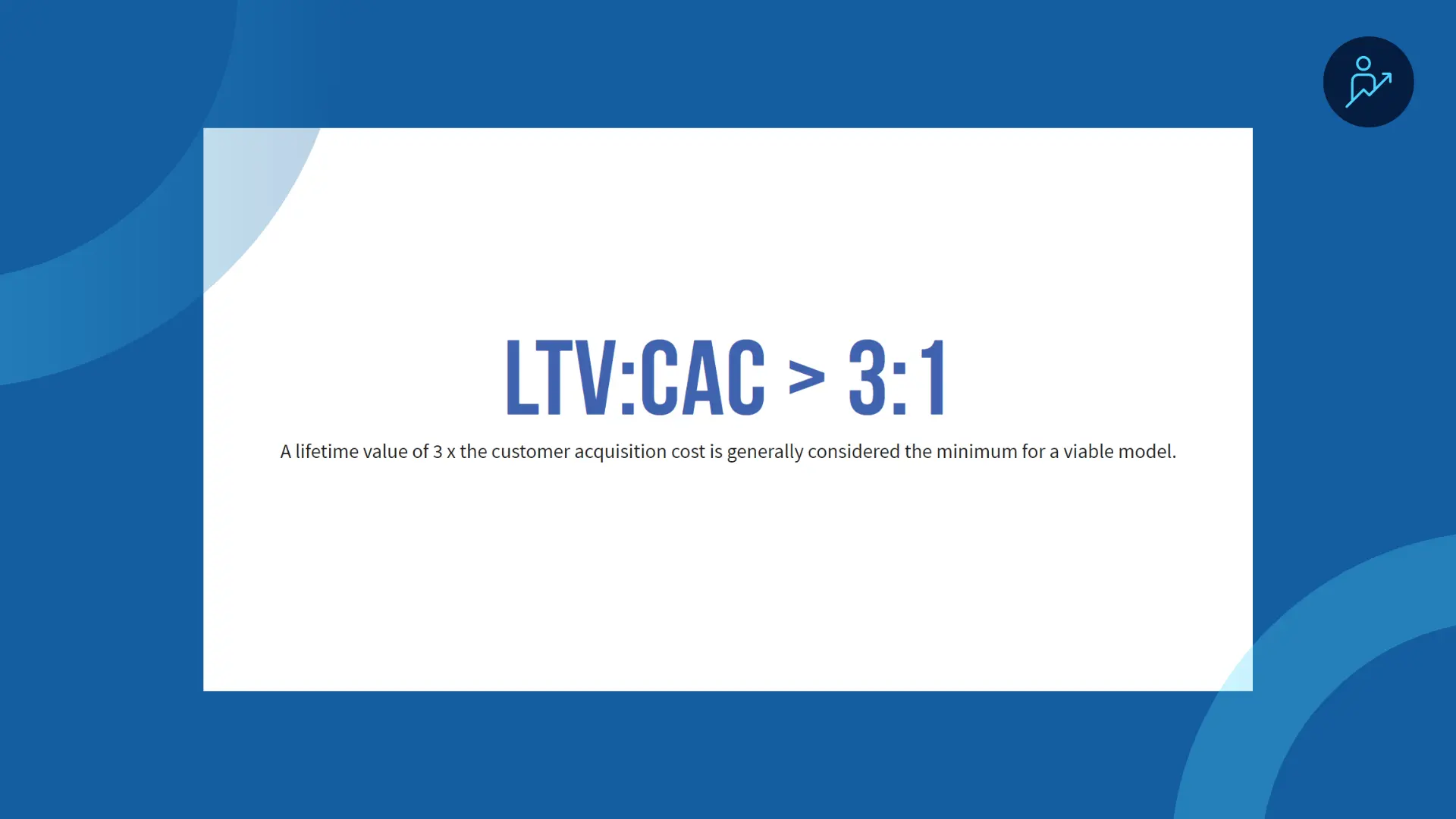
So what that means is that if it costs you $1,000 to get a customer, you have to have a minimum LTV of $3,000. If it costs you $5,000 to get a customer, it needs to be at least $15,000.
The first question that should come out of this metric is, “What is your customer acquisition cost?”
If you don’t know that, you can’t possibly know what you need the LTV of your customers to be or how much you can afford to spend to acquire a customer and still have a viable model.
2. CAC: $500–$2500+
How much can we afford to spend? What is typical in the marketplace for businesses that are out there acquiring small businesses as customers?
The range that you’re going to find most commonly out there in the marketplace is somewhere between $500 and $2500 to acquire a customer. That range depends on the complexity of your sales cycle and your offer.
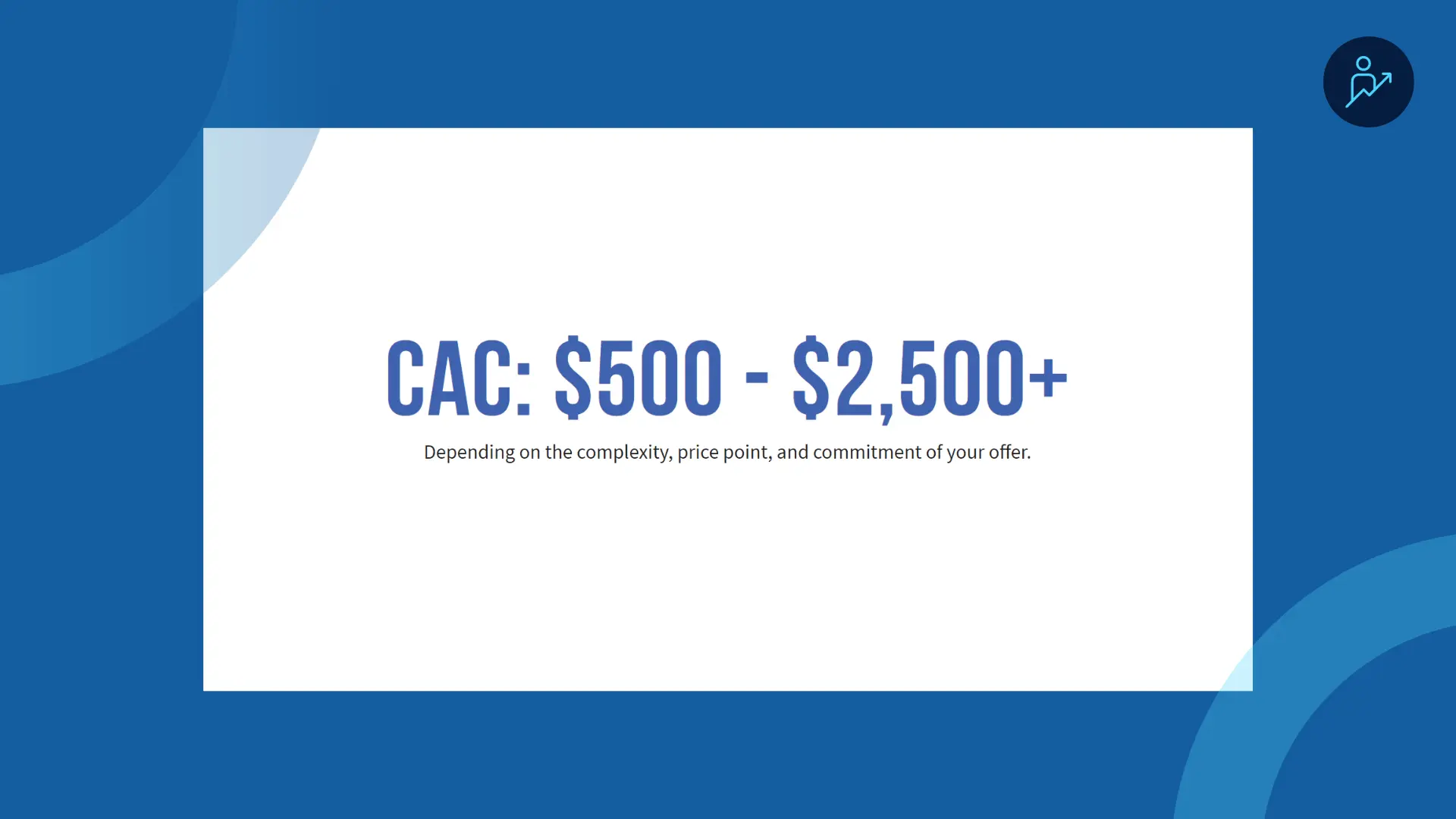
You’ll see I have a plus here ($2500+) because if you’re selling something more complex that draws out the sales cycle and/or if you’ve got something that’s higher ticket, it draws out the sales cycle, and your CAC goes up.
I’m going to show you some numbers here later that, I think, are going to blow your mind when it comes to how much businesses are spending to acquire customers.
3. Payback Period
The payback period is the time it takes to recover your investment in acquiring that customer.
Let’s assume a 100% gross margin (GM%):
If you spent $5,000 to acquire a customer, but your customer was only paying you $1000 a month, the payback period should be 5 months. That is, five months before you got your money back that you invested to acquire that customer.
If you’re selling without funding or building your business but don’t have the deep pockets of a venture capital firm, 3 to 6 months is typically the time period that people can make work.
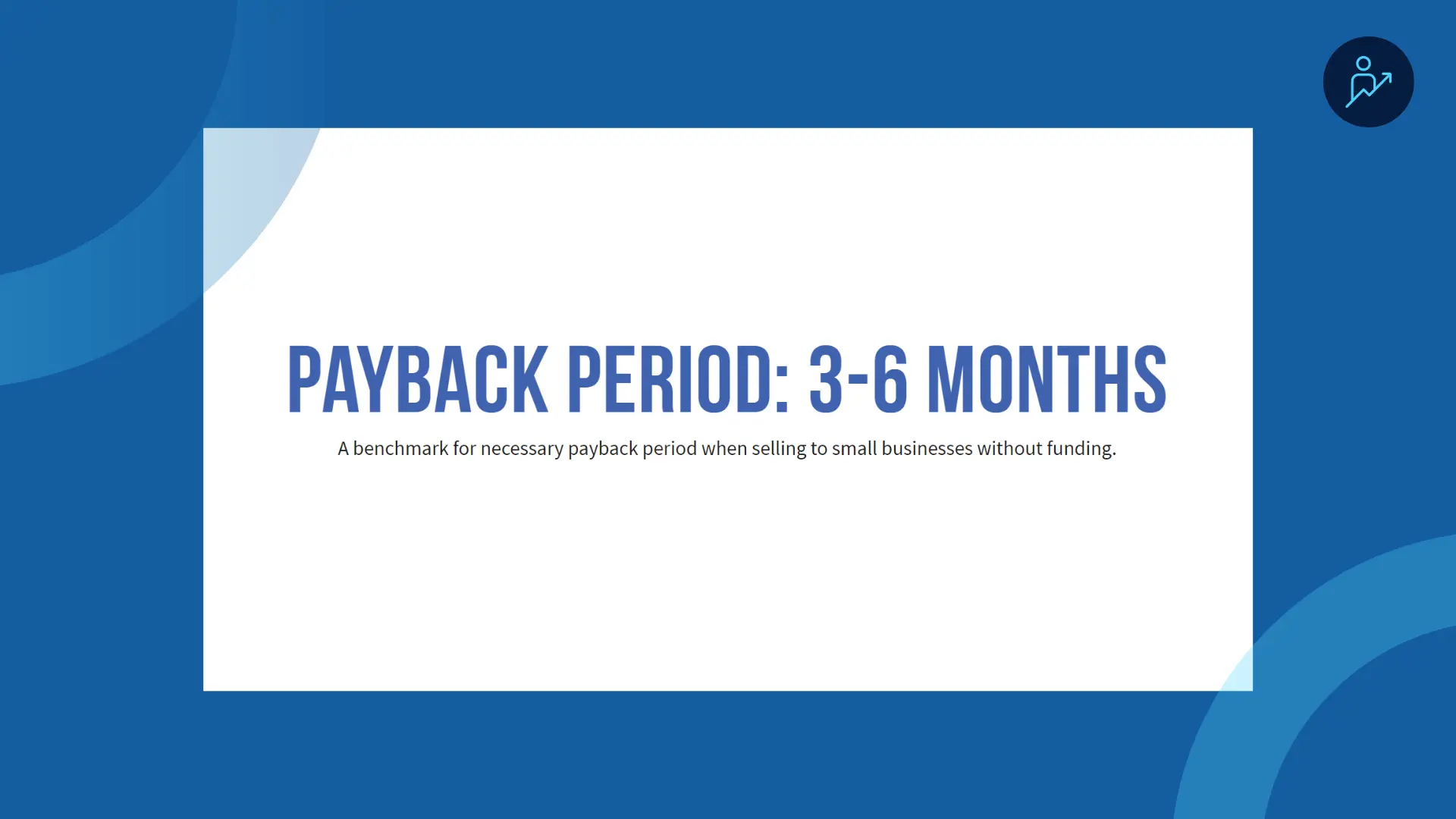
My first business experience:
When I was building my first business selling to small businesses, I counted on a 1-year payback period. That may seem crazy to you, but with almost no funding at all, I built that business into several millions of dollars of recurring revenue!
Why?
Because I understood these numbers. I understood that I had to invest to acquire those customers where my competitors didn’t. They didn’t have the patience to invest, acquire customers, and wait for that payback period.
I knew I just needed to outlast them, and I could spend more to acquire customers. And that’s exactly what I did.
So, 3 to 6 months is realistic. I’m going to show you some specific numbers later as to how we make that work.
4. Gross Margin: 65%+
Gross Margins are how much money you have left over from your top-line revenue. Expressed on a percentage basis, what you most commonly see is 65%.
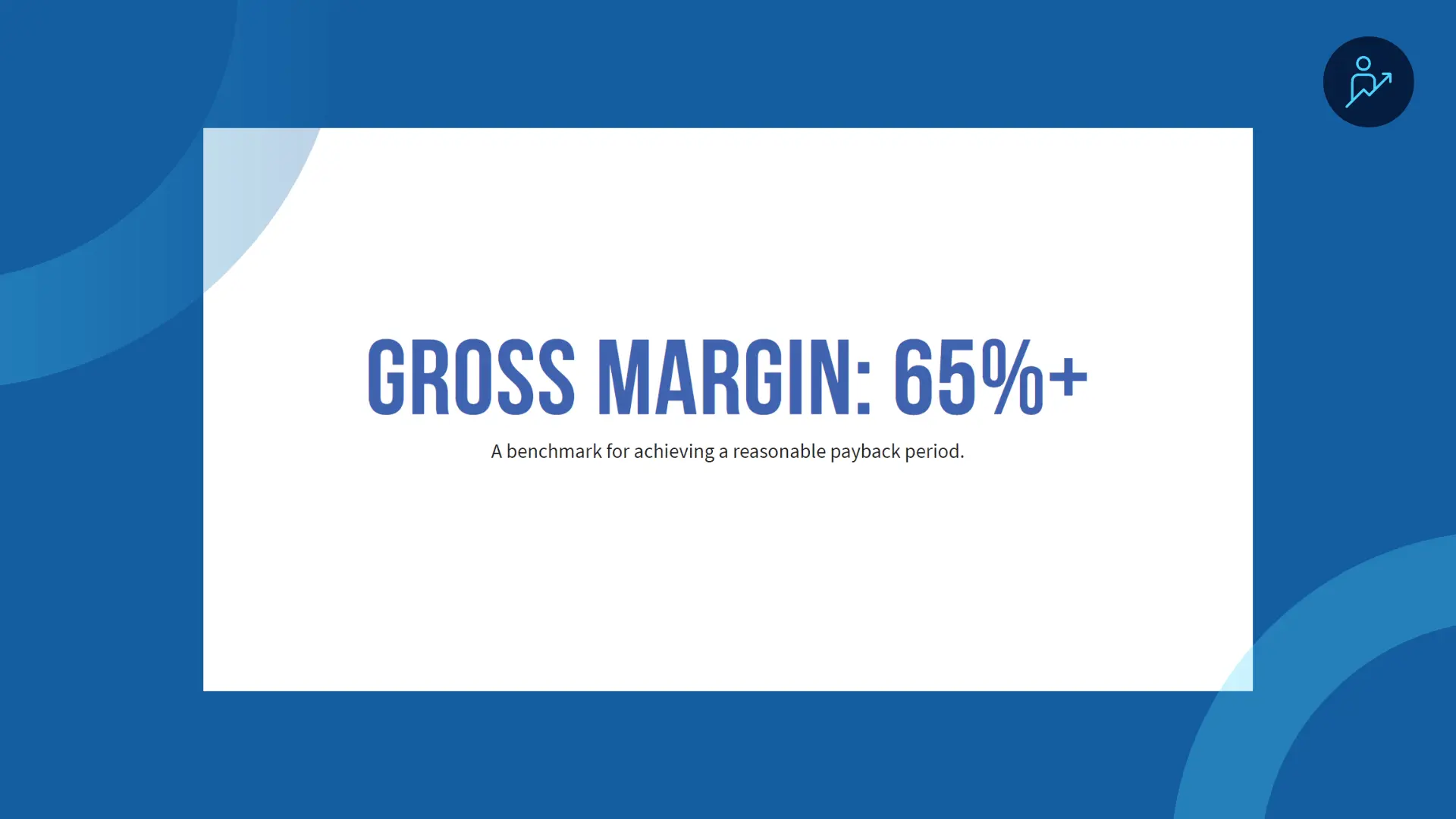
What we’re saying is that if you’re selling a thousand-dollar service to your customers, you have to have gross profitability for that service. So, you take out your cost of delivering that service.
Those costs would be 35% leaving you with 65%.
Anything less than that, and it gets really, really hard to have enough money to invest in the sales and marketing and overhead of your business for growth. The higher that number goes, the easier it is to fund your business.
65% IS the minimum.
5. Churn: 1–2.5%
Churn is a killer in this business. Customers leaving is a killer.
The hardest thing to do in this business is to get a new customer. So, when you go through all that work to get a new customer, and then one goes away, THAT kills you. It takes away your momentum.
What is an acceptable level of churn? 1 to 2.5% per month.
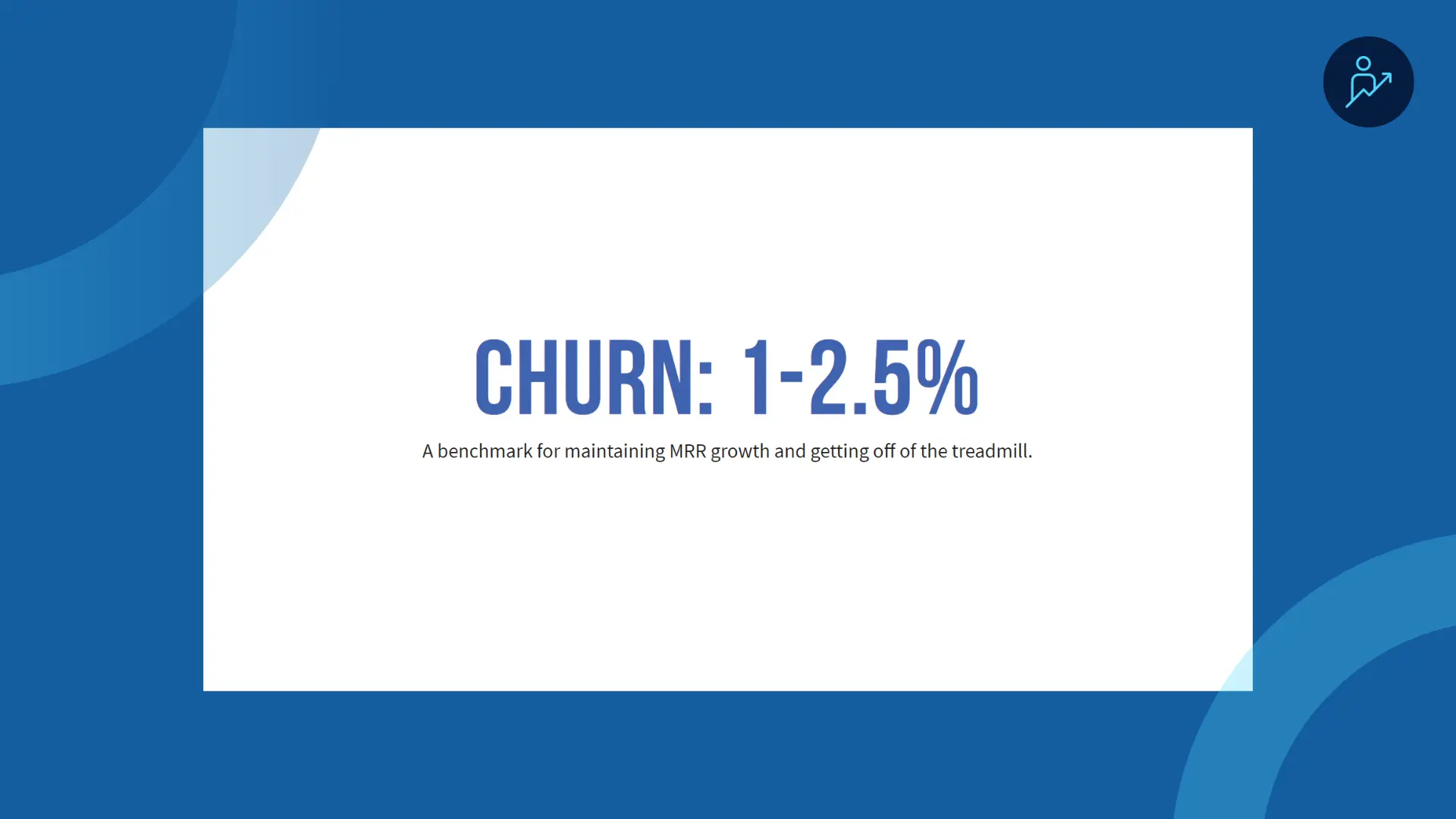
It is the key to getting off the treadmill. The treadmill that I’m referring to is that you get some customers and recurring revenue coming in, then the churn catches up with you, and your sales team can’t produce more than the churn. You end up just kind of flatlining.
They’re just staying there, and you’re on the treadmill. You’re running like crazy, but you’re never really getting ahead!
For most agencies, that happens at a really low level because their services have a lot of churn. For the best businesses, we would love to see that number close to 1%. Some businesses get even lower. Most of them don’t. But 1 to 2.5% is a good metric.
Agency vs. Marketing Systems Provider
Let’s get into modeling these numbers so that we can see the impact on the business and where most digital agencies are doing this wrong.
For those of you who are not familiar with me, I hate the agency model.
I use the word “agency” only because that’s what most people know. I believe that for success, you have to be a Marketing Systems Provider.
What’s the difference?
Let me break down the different models in this industry so you understand exactly what I mean and why the Marketing Systems Provider model is the only really good model for success.
Project Agency
Let me show you some of the differences between a typical agency where people are doing some sort of project work and some sort of custom project work for your customers.
UFC: $5000
Maybe you’re doing a web design or a Facebook campaign launch, but let’s just say that’s a $5,000 project. Let’s say you’re running your business really well, and before you even start work, you make sure that you get paid in advance for the entire cost of the project.
That’s great because now you have the cash to grow your business. You paid $5,000 upfront. That’s awesome.
But NOW it’s CUSTOM WORK. That means you made proposals and you probably had a little bit of a drawn-out sales process.
CAC: $2500
I’m going to put you on the upper end of that range for the CAC. Say you spent $2,500 to get that customer. You may not believe that you’re spending $2,500 to get that customer but we’ll do the math in a bit and see if I’m right.
AMRR: $0
So, the average monthly recurring revenue that you get from that customer is zero. This is a one-time project. You’re not getting any recurring revenue from them.
GM%: 50%
Because it’s custom work, most agencies are operating at around 50% gross margins. Remember, we need at least 65%. Most doing custom work are operating around 50%, although some of them, unfortunately, will drop well below that because those custom projects get dragged on.
The customer changes their mind. Some things demand some rework, and you don’t have good processes to handle that and make sure that you’re billing for it. So that number can sadly be generous.
GM$: $2500
But that leaves you with a gross margin of $2,500 AFTER the cost of service delivery, which you have to go back into paying for the rest of your business.
Payback Period: Immediate
The good news is that you paid your cash upfront and your payback period is immediate. This is why agencies get stuck in this model. They see a $5,000 check come in, and they get all excited and go, “Oh, look at all that money I just got!”
It’s addicting! Especially when you don’t know your model.
Churn: 50.0%
So they get their $2,500 and their payback period is immediate. Unfortunately, the churn eats them alive!
Anyone doing this understands that maybe some of those customers will come back and do additional projects with you but many of them don’t. We’re going to say that our monthly churn is 50%.
LTV: $5000
What I’m saying there is that, essentially, you took a couple of months or even just 30 days to do that job, and a solid half of your customers within that month are now going to go on and not come back to you or buy anything from you.
That means that the lifetime value of a customer is $5,000.
If you want to calculate to understand that, you take the $2,500 gross margin and divide it by 0.5.
(2,500 / 0.5 = $5,000)
$5,000 is the lifetime value of the customer. That makes sense because it’s the customer that is paying you once for a project and then going away.
LTV: CAC
So, what is your LTV to CAC? Remember, this metric needs to be 3:1 at a minimum to make this business model work. In this case, it’s not. Not even close. It’s 2:1.
Now, if you didn’t do a good job of collecting all of your money upfront, we’re talking about receivables: chasing down our customers for payment. It takes them a month and a half to pay after the project is completed, which takes you a month to do.
Now, you’re two and a half months behind on your cash cycle. You’re in big trouble!
Everybody who’s been in the agency business doing custom work recognizes what I’m talking about. That model stinks. That’s why I hate the agency business the way that most people do it.
Grab My Free Training
Learn The Four Best High-level Services To Use To Start A Digital Agency FAST!
Ad Agency
Let’s go on to a slightly different agency model—the Paid Ad Management Agency.
You’re going to say, “No, Mike! I do an ad agency model. I manage it. Two Facebook campaigns for people, and I get $2,500 a month. And it’s recurring, Mike.” Awesome!
In this scenario, let’s pretend that you don’t get any additional cash upfront. You just get that $2,500 monthly payment.
CAC: $2,500
A similar customer acquisition costs $2,500 because selling to these agency customers takes a little while.
AMRR: $2,500
As we said, you’re receiving a $2500 monthly payment.
GM%: 55%
You have gross margins of, let’s say, 55%. You’ve got a little bit better margins, but that’s the ad agency business.
When you’re only getting paid $2,500 a month from a small business, that’s really not a great margin. So, you’ve got somebody that’s got to sit down and manage campaigns, create campaigns, report metrics, all that stuff, getting you to 55%.
It’s better than custom work, but it’s not great.
GM$: $1,375
Payback Period: 1.8 months (not bad at all!).
Churn: 20%
If you’ve been in this business, you know that those customers stick around for 5 or 6 months. Then you’re trying to justify that your ads are actually working because your customers are paying you that much money for management when their ad budget is only $1,500, and they’re paying you 2,500 for management.
It gets hard to keep those customers around, which is why there are not very many agencies running ads for small businesses and doing it in any sort of custom way.
It’s okay if you’re doing this for larger businesses, for e-commerce businesses that are doing $10-15M a year. It’s necessary for them to have somebody managing those ads. But for most small businesses, it stinks.
LTV: $6,875
Again, how do I calculate that number? You take $1,375 and divide it by 20%, which gives you $6,875.
LTV:CAC: 2.75:1
You’ve now got an LTV:CAC of 2.75:1. We’re getting closer to that 3:1 model, but we’re STILL NOT THERE, which is why so many of these ad agencies struggle to really grow.
2.75:1 is not 3:1.
Marketing Services Provider–Solid Churn
Let’s start talking more about my favorite model. The MSP Model.
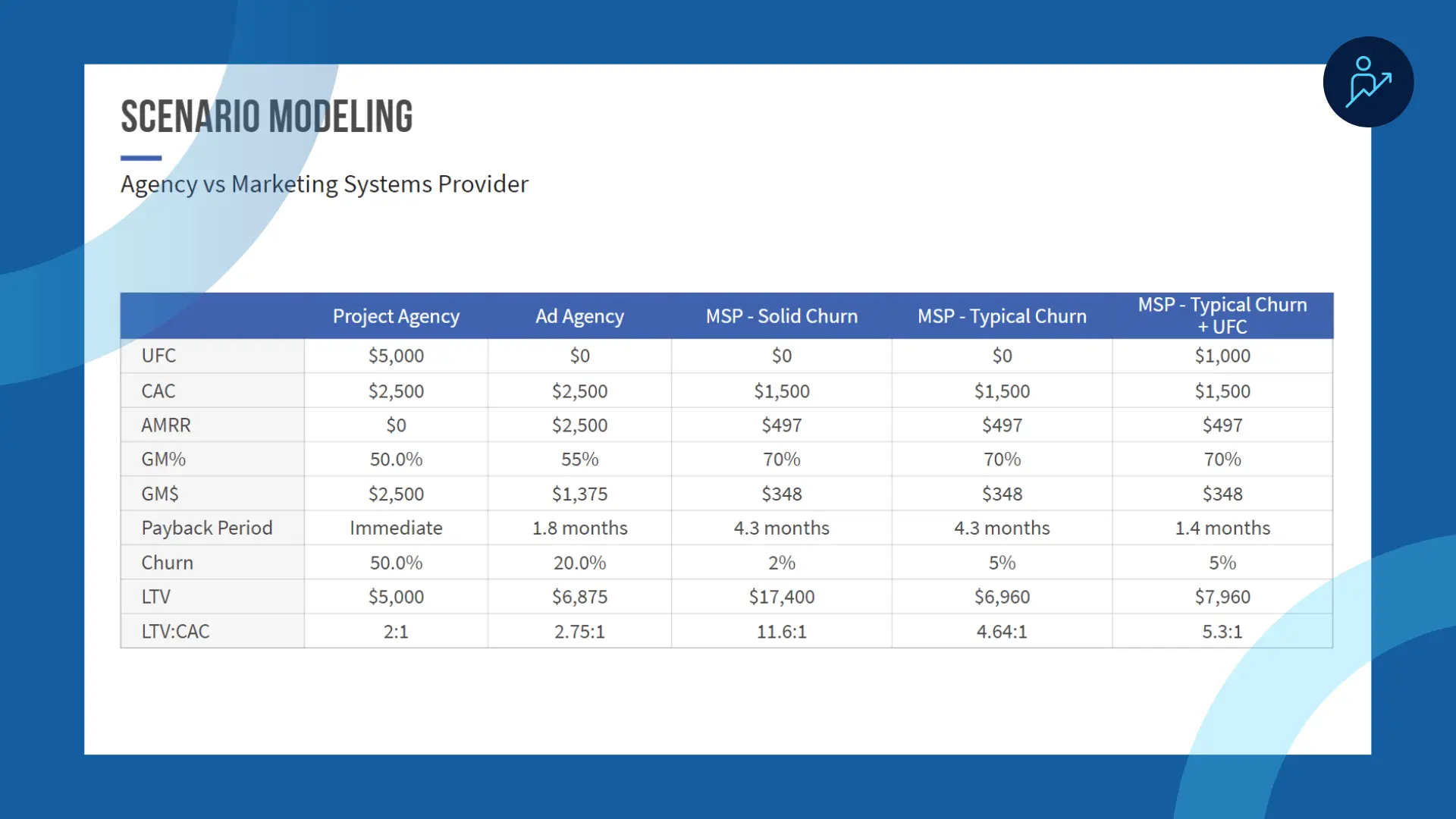
I call it a Marketing Systems Provider. One of the key characteristics of this model is that you’re charging a lower price point. You’re building your service more on technology and automation using systems like Highlevel. You’re doing almost no custom work.
CAC: $1,500
Because of your lower price point, your customer acquisition cost comes down a bit. Small businesses are easier to sell to when you’re charging $497 a month rather than $2,500 a month.
So we’ve dropped that CAC down to $1,500. It’s critical that we’re able to do that.
AMRR: $497
$497 is our monthly recurring revenue now because it’s based on agency technology and automation.
GM%: 70%
Gross margin is 70%.
GM$:$348
Your margins are now 70% versus the 50% and the 55% that we talked about before, giving us gross margins of $348.
Payback Period: 4.3 months
Our payback period is a little longer here. We’re still in that 3- to 6-month range, though.
Now, this is where most people get scared away. They see that number, and they panic, and they think, “Mike, I can’t do that! I need my $5,000 check upfront.”
There are strategies to get paid upfront, but to understand this number and why it makes sense, let’s follow these numbers down…
Churn: 2%
I showed you those metrics before 1 to 2.5%.
LTV: $17,40
If I can get churn down to 2%, look at the lifetime value of my customer: $17,400! This means that at 2% churn, customers stay with me for a few years.
In my experience, that’s exactly how it happens at these price points. Customers stick around for a few years, and they get ridiculously profitable.
LTV:CAC: 11.6:1
When you understand that math, you go, “Oh wow! I can afford to eat some costs up here and be a little bit patient on getting my payback if I can get 11.6:1 LTV to CAC.“
It’s a totally different business. The value that’s created is totally different.
Marketing Services Provider—Typical Churn
Let’s say, “Hey, Mike. I don’t believe you can get that 2% churn.” No problem! I would actually say that typical in this business for most service providers is going to be more like a 5% churn.
So, if I had $100,000 of monthly recurring revenue, $5,000 of that revenue would disappear that month. So, around 10 of my customers would cancel.
LTV:CAC: 4.64:1
If that were the case, look! We still have a 4.64:1 LTV to CAC. We still have an LTV of almost $7,000. It’s still a really viable model. Much better than the first two that we looked at.
Marketing Services Provider—Typical Churn + UFC
Now, let’s just say that you understand all this, and you go, “Mike, I want to recover my money more quickly,” and we figure out a way to get $1000 upfront.
You’ve got some sort of training package, startup fee, marketing audit, or a planning service that you provide for them. Maybe you just get them to prepay for some months in advance.
So you get $1000 dollars upfront, and the rest of these numbers stay the same.
LTV:CAC
Now, you’ve got a 5.3:1 LTV to CAC. Remember, anything over 3:1 means you’re winning.
Payback Period: 1.4 months
When you go back to that original agency model, if you had any issues with invoicing, billing, or collections in that business, you’re already past 1.4 months, realistically. I gave you the benefit of the doubt in that model by saying you were able to collect all your cash upfront.
The vast majority of agencies don’t do that. They invoice, and they wait more than 1.4 months.
In this model, at $497, we don’t do any invoicing. People fill out forms on your website, put in their credit cards, and get billed every single month on autopay.
Funnel Math
Let’s take a look at how these numbers work in terms of acquiring customers.
We have to understand how these numbers play out so that we develop realistic sales and marketing systems. We measure what matters, and we make sure that we stick with it long enough to see results.
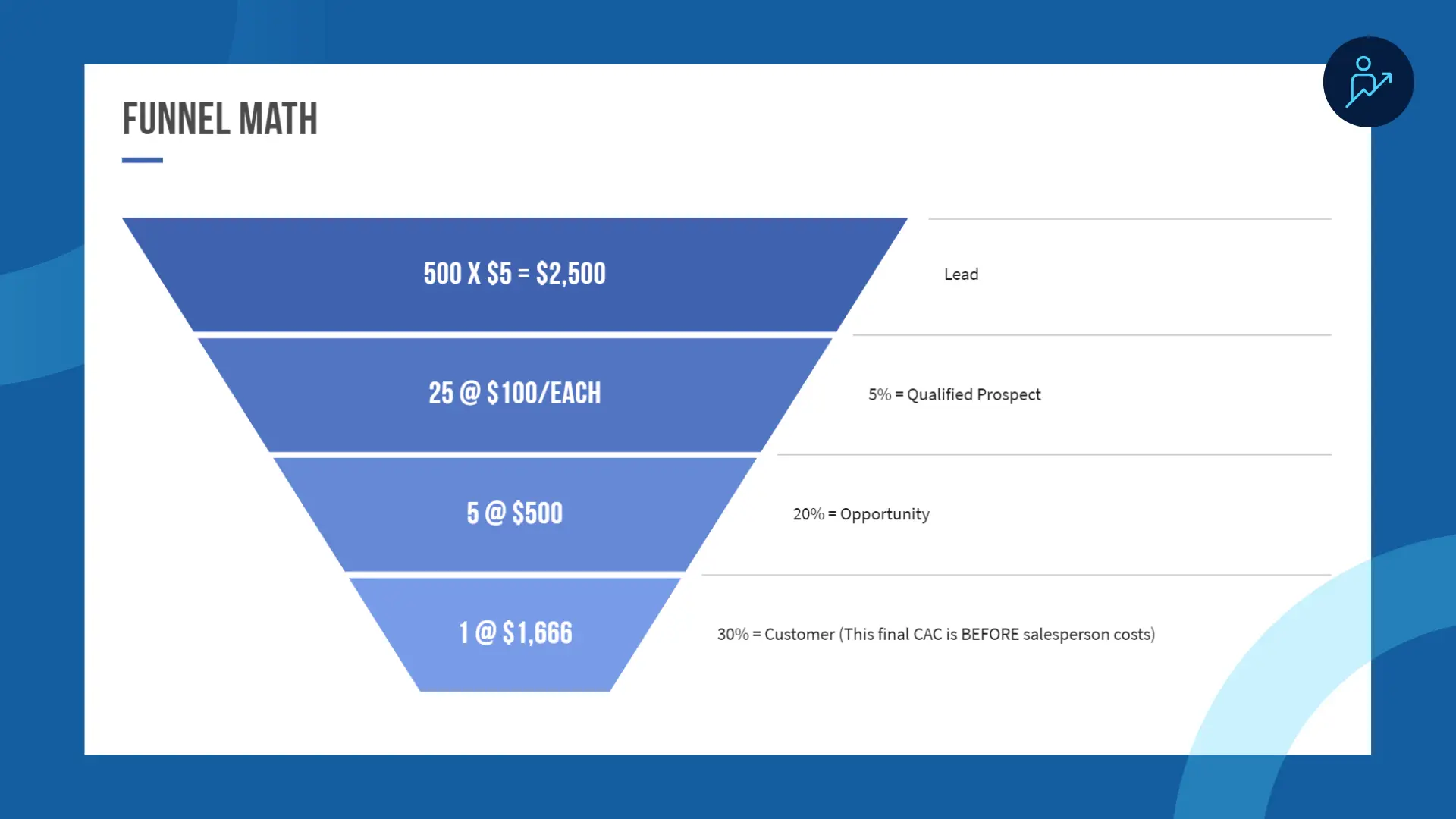
Again, unrealistic expectations are what kills most agencies.
They do a little bit of marketing and selling for a while. They don’t see immediate wins and don’t understand the math here. So, they make the mistake of quitting before they ever have the opportunity to see the math work in their favor.
Lead
Let’s say that we’re doing $2,500 in advertising in a month, and it’s costing us $5 to get a lead. Not bad. That’s 500 leads that we generate at $5 each.
5% = Qualified Prospect
Let’s say that 5% of those become qualified prospects.
What do I mean by qualified prospects? Maybe they’re booking time on your calendar to talk to you. They respond to your phone call when you do a follow-up call to them. You actually had a conversation with them.
At 5% this is not an unrealistic number. You could argue it’s a little low. I could show you all kinds of metrics that say that’s just fine. But if we do this, it means we’ve now spent $100 per qualified prospect.
20% = Opportunity
Let’s say 20% of those actually become an opportunity.
What I mean by an opportunity is somebody that is ready to buy here in the next sale cycle. So, if your sales cycle is typically 30 days, somebody who is ready to make a decision here in the next 30 days is an opportunity.
Five of those 20% equals five, which now means that they’ve cost us $500 a piece to get to that point.
30% = Customer
This final CAC is BEFORE the salesperson’s cost.
Let’s say 30% of those actually become customers, that’s now $1,666 per customer. If you do the math, 30% of 5 is around 1.5. So, it’s really like 1.5 at $1,666 each. Now, this is BEFORE salesperson costs.
If you’re paying a salesperson or any sort of commission, you’ve got that on top of this. This is just the marketing cost that we spend to get those leads.
So now that we understand this math, we can see this is a realistic funnel. If you don’t think it’s a realistic funnel, you’re going to make bad decisions about your business.
Let me show you how I know it’s real. Look at these numbers.
HubSpot
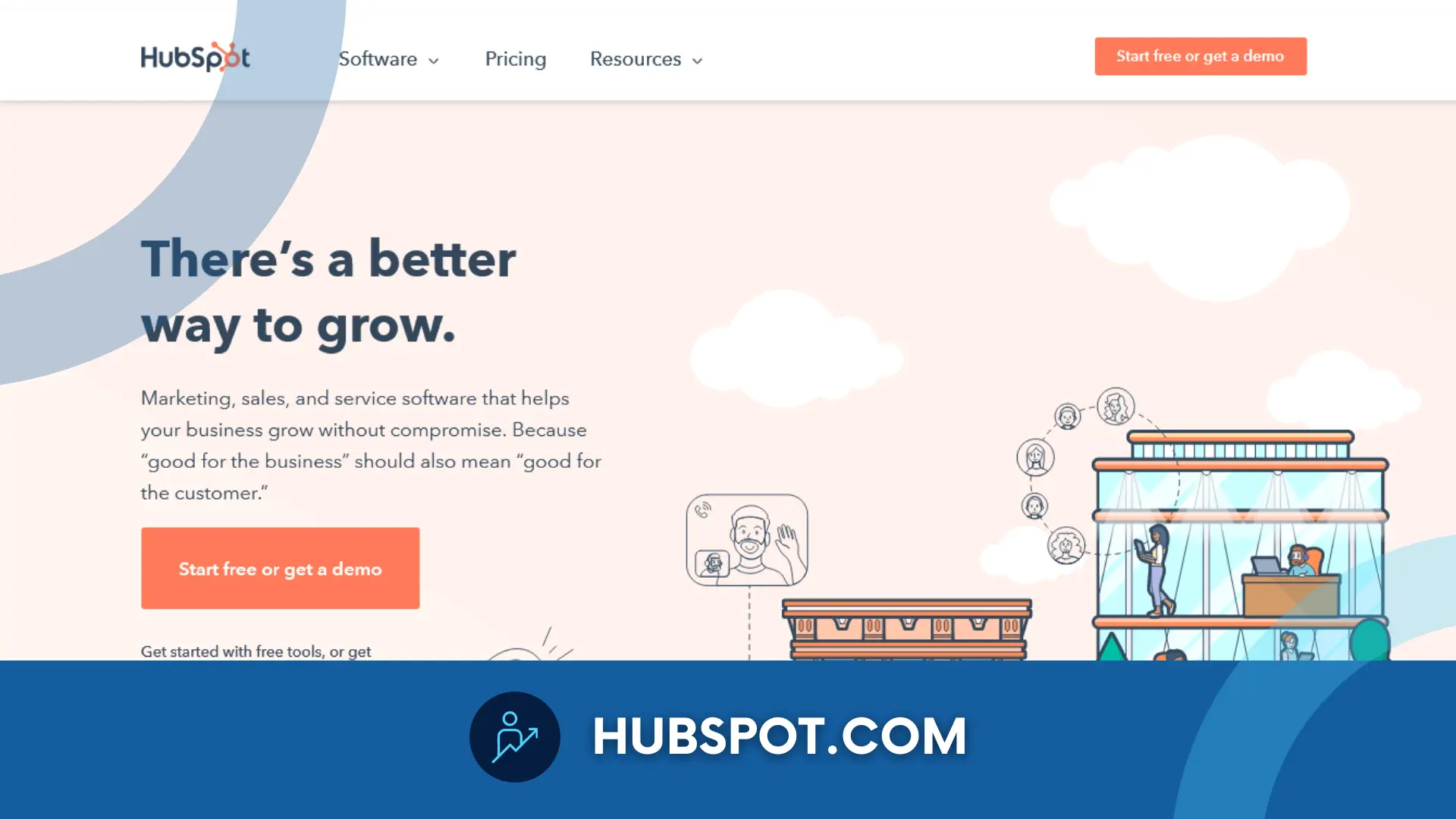
How much do you think HubSpot invests to acquire a customer? $6,880 to acquire a customer, and that was actually back in 2012!
- AMRR: $583
- GM%: 81%
- GM$: $472
- Payback Period: 14.5 months (They’re okay with that because they’ve raised hundreds of millions of dollars to invest.)
- LTV: $23,775
- LTV:CAC: 3.5:1
Their investors see these numbers, and they go, “Hey, we’ll give you 150 million bucks to invest in sales and marketing.”
You’re well-funded competitors understand these numbers and are willing to invest to acquire a customer.
Constant Contact
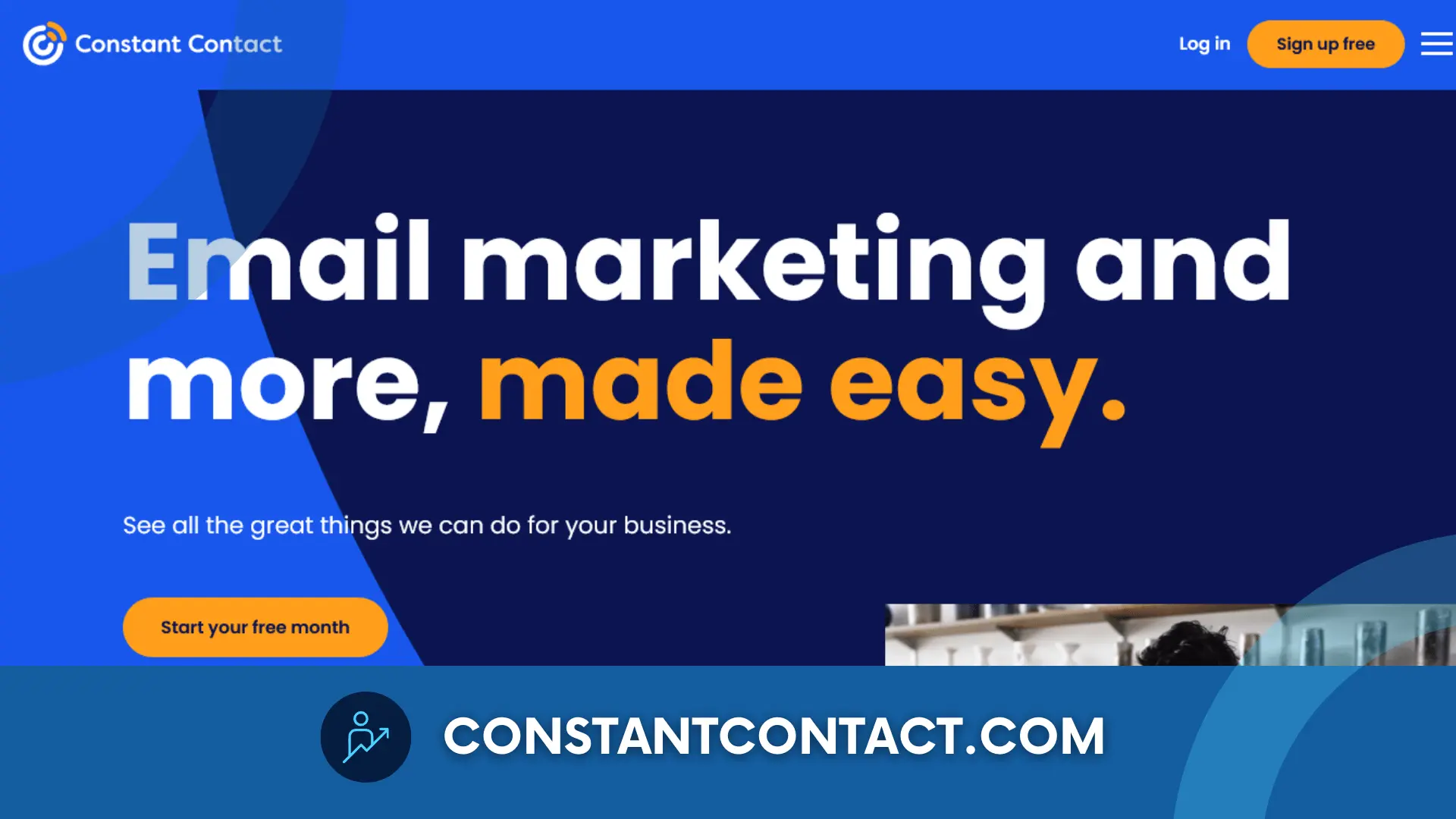
- CAC: $450
- AMRR: $39
- GM%: 72%
- GM$:
- Payback Period: 16months
- Churn: 2.2%
- LTV: $1,276
- LTV:CAC: 2.8:1
Constant Contact, again in 2012, received $0 upfront and spent $450 to acquire a customer. They’re down by that CAC that we were saying is a very low end of the spectrum—$500.
Then look at their average monthly recurring revenue: it’s only $39 but with 72% margins and a 16-month payback period. They have 2.2% churn. Their customers were worth $1,276 LTV giving them a 2.8:1 LTV to CAC.
Constant Contact had to figure some things out to get past this, and I’ll share them with you.
My resource is actually a great little write-up about what they had to do. It shows you some of the differences in sales and marketing approaches that allow them to get that CAC down there, and is important for us to learn from.
Typical SMB SaaS
These are the numbers for a typical SaaS software provider selling to the small marketplace. This is data that I got from VC Firm Research.
- CAC: $1,500
- AMRR: $200 (Typically, in the small business space between $97 and $197)
- GM%: 80%
- GM$: $160
- Payback Period: 9.3 months
- Churn: 3%
- LTV: $5,333
- LTV:CAC: 3.55:1
That’s very typical in the small business space. Now, you may be saying, “Mike, those are 2012 numbers. Why don’t you have more updated numbers?”
That’s very typical in the small business space. Now, you may be saying, “Mike, those are 2012 numbers. Why don’t you have more updated numbers?”
Good question! I’m going to share with you, again, in those resources, what has happened to HubSpot’s customer acquisition costs since then.
What’s interesting for you to know is that while HubSpot was still disclosing those numbers, they were going up. They continued to go up. And I say, “while they were disclosing those numbers” because they stopped disclosing those numbers.
Now, why would HubSpot stop disclosing those numbers publicly? I don’t think it’s because the numbers have been going down, and their marketing has been working really well. That’s my guess.
Avoid the Cycle of Doom
If you understand the metrics and the model that we went through, you will know that to succeed in this business, you need an obsession with two things:
How do I lower customer acquisition costs (CAC)?
How do I grow lifetime value (LTV)?
That’s what this business is all about.
If you don’t know those metrics that we just went through, if you don’t have a model for how you are going to move a lead to a qualified prospect, to an opportunity, to a closed deal, to then retaining them long enough to get that lifetime value to at least a 3:1 ratio over your CAC, then there’s no way that you’re going to grow a business in this space, because you’re never going to have realistic expectations about what it takes.
You’re never going to make the investment necessary, and you’re going to continue to sell one-off projects that don’t get you anywhere. They’re addicting because you get some cash coming in up front, but then those customers churn, and you’re stuck.
You’re repeating this cycle over and over again. I call it the cycle of doom in the agency business.
How do we get out of it?
I’d love to share with you a collection of resources around these numbers: some case studies, some videos, and the tools to help you model this yourself.
Just head over to www.servicesthatscale.com/saas.
What does SaaS stand for? Systems as a Service, NOT Software as a Service.
As I said, I believe that the agency industry is really the marketing systems provider (MSP). Systems as a Service is what this industry is all about!
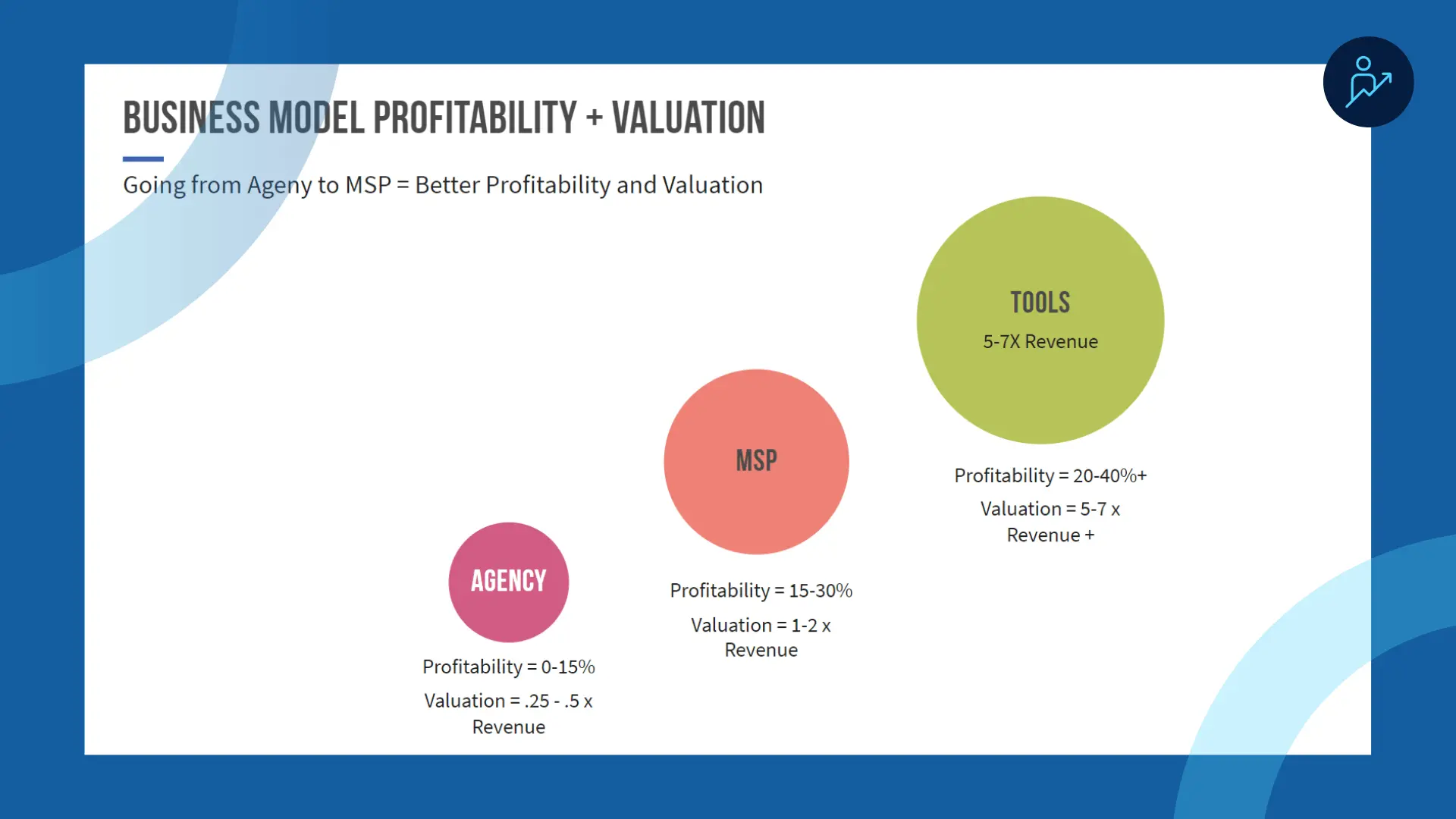
It’s all about knowing your numbers
If you know your numbers, then you can construct a realistic model with realistic expectations. You can know how much you need to invest to make sure that you have real sales and marketing processes that can give you the customers you need for success.
And you can stop relying on those one-off projects that seem sexy but are really draining your business of any sort of potential.
If you’d like additional resources on this model, please visit www.servicesthatscale.com/saas.
Thanks so much for stopping by!
All the best,

PS – I made six shifts in my approach to building my business that allowed me to grow quickly and stop trading my time for money. You can learn them here. 👈🏻
PPS – Here are two ways to get involved with our community of entrepreneurs. Both will give you everything you need to go from where you are today to running a successful seven-figure agency:
- Click here to sign up for GoHighLevel CRM through me. All of my GoHighLevel CRM customers get access to Moguls for FREE—Just part of the huge Bonus Package I provide. To see the full Bonus Package click here.
- Click here to join Moguls directly. You’ll get access to all of our live boot camps, content, and community that have helped folks just like you scale to seven figures and beyond!



